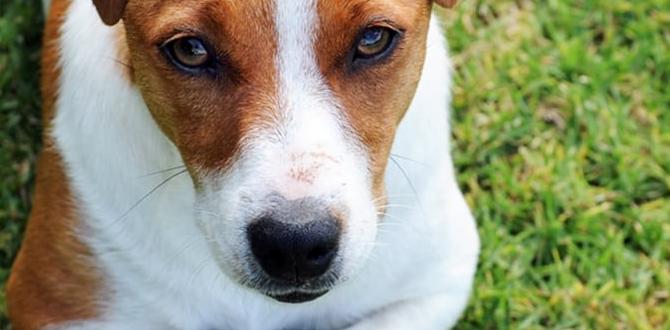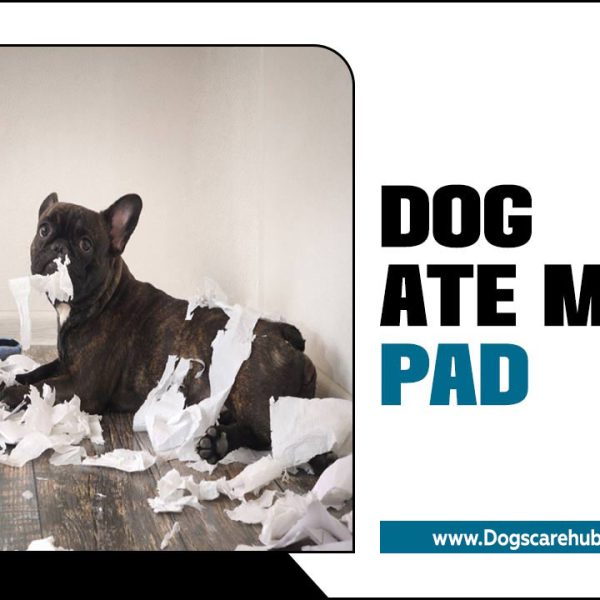Ready to transform your dog’s behavior? This step-by-step guide provides easy-to-follow dog obedience tips for beginners, helping you build a strong bond and a well-behaved companion using positive reinforcement and consistent training.
Welcoming a new dog into your life is incredibly exciting! But sometimes, those adorable puppy antics can quickly turn into challenging behaviors. Don’t worry, you’re not alone. Many dog owners find themselves navigating the sometimes-frustrating world of dog obedience. Whether your furry friend pulls on the leash, jumps on guests, or struggles with potty training, improving their manners is key to a happy home. This guide is here to help, offering simple, step-by-step tips to build a foundation of good behavior and a stronger connection with your dog.
Why Dog Obedience Matters for You and Your Pup
Think of obedience training as a two-way street. It’s not just about teaching your dog commands; it’s about clear communication, mutual respect, and building a lifelong partnership. A well-behaved dog is a joy to live with, making everyday life smoother and more enjoyable for everyone.
The Core Principles of Effective Dog Obedience
Before we dive into specific commands, let’s cover the fundamentals. These principles are the bedrock of successful dog training, regardless of your dog’s age or breed.
Positive Reinforcement: The Kindest Way to Train
This is the most effective and humane method for teaching your dog. Positive reinforcement means rewarding your dog for doing something you like. This could be a tasty treat, enthusiastic praise, a favorite toy, or a good petting session. When your dog learns that good behavior brings good things, they’re more likely to repeat it!
Rewards: High-value treats (small, soft, and extra yummy for your dog) are excellent motivators.
Timing: Reward your dog immediately after they perform the desired behavior. This helps them connect the reward directly to their action.
Consistency: Everyone in the household should use the same commands and reward system.
Consistency is Key
Dogs thrive on routine and predictability. Inconsistent training can confuse your dog, making it harder for them to learn. If “off” means jump off the couch sometimes but stay on at other times, your dog won’t know what you expect. Stick to your rules and commands every single time.
Patience and Understanding
Every dog learns at their own pace. Some pick up new skills quickly, while others need more time and repetition. Avoid getting frustrated. Remember, your dog isn’t trying to be difficult; they’re just learning. Celebrate small victories and keep training sessions short, fun, and positive.
Keep it Fun and Short
Long, drawn-out training sessions can bore your dog and lead to disinterest. Aim for multiple short sessions (5–10 minutes) throughout the day. End each session on a positive note, even if it’s just with a simple command your dog already knows, followed by a reward.
Essential Tools for Your Obedience Training Toolkit
You don’t need a lot of fancy equipment to get started. Here are a few essentials that will make your training journey smoother:
High-Value Treats: Small, irresistible treats your dog loves.
Leash: A standard 6-foot leash is great for training walks.
Collar or Harness: Ensure it fits properly and is comfortable for your dog. A front-clip harness can be very helpful for leash pullers.
Clicker (Optional): A clicker can be a precise marker for desired behaviors, paired with a treat.
Patience and a Sense of Humor: These are non-negotiable!
Dog Obedience Tips Step By Step: Mastering Basic Commands
Let’s get to the actionable steps! We’ll cover some of the most important commands that form the foundation of good behavior.
Step 1: Teaching the “Sit” Command
“Sit” is one of the most fundamental commands and a great starting point for any dog.
1. Get Your Dog’s Attention: With a treat in your hand, stand or kneel in front of your dog.
2. Lure the Sit: Hold the treat near your dog’s nose. Move the treat upwards and slightly back over their head. As their nose follows the treat, their rear end should naturally lower into a sit.
3. Mark and Reward: The moment their rear touches the ground, click (if using a clicker) and immediately say “Yes!” or “Good!” Then, give them the treat.
4. Add the Word: Once your dog is reliably sitting with the lure, start saying the word “Sit” just as you begin to move the treat.
5. Phase Out the Lure: Gradually make the hand motion smaller, eventually using just the verbal cue. Continue to reward.
6. Practice, Practice, Practice: Practice in short sessions, in different locations, and with increasing distractions.
Step 2: Mastering the “Stay” Command
“Stay” is crucial for safety and impulse control. It teaches your dog to remain in a specific position until released.
1. Start with “Sit” or “Down”: Have your dog in a sit or down position.
2. Introduce the Cue: Hold your hand out flat, palm facing your dog (like a stop sign), and say “Stay.”
3. Short Distances, Short Times: Take just one small step back. If your dog stays, step back to them, say “Yes!” and reward.
4. Introduce the Release Word: After rewarding, use a release word like “Okay!” or “Free!” and encourage your dog to move. This teaches them they aren’t released until you say so.
5. Gradually Increase Distance and Time: Slowly increase the number of steps you take back and the length of time you ask them to stay. Always return to your dog to reward, don’t call them to you.
6. Add Distractions: Once your dog is reliable with no distractions, introduce mild ones (someone walking by, a toy dropped). If they break the stay, calmly reposition them and try again with a shorter duration or distance.
Step 3: Teaching the “Come” (Recall) Command
A reliable recall is arguably the most important command for your dog’s safety.
1. Start in a Safe, Enclosed Area: Begin indoors or in a securely fenced yard.
2. Make it Fun! Get down on your dog’s level, sound excited, and say their name followed by “Come!” Use a happy, encouraging tone.
3. Reward Generously: When your dog comes to you, give them enthusiastic praise and a fantastic treat or toy. Make coming to you the best thing ever!
4. Use a Long Line (Outdoors): When practicing outdoors in less controlled environments, use a long leash (15–30 feet) to give them freedom but maintain control if they don’t respond.
5. Never Punish: Never call your dog to you for something unpleasant (like a bath or nail trimming) or if they’ve done something wrong. This will make them hesitant to come when called.
6. Practice on the Go: Practice in different environments with increasing distractions.
Step 4: Walking Nicely on a Leash (Loose-Leash Walking)
Leash pulling can be a major frustration. The goal is for your dog to walk beside you without pulling on the leash.
1. Use the Right Equipment: A front-clip harness can make a big difference by redirecting your dog’s forward momentum.
2. Reward Slack in the Leash: Whenever the leash is loose, mark it with “Yes!” and offer a treat by your side.
3. Stop When They Pull: If your dog pulls ahead, stop walking immediately. Don’t yank or drag them back. Wait patiently until the leash slackens (they might look back at you, or turn towards you).
4. Resume Walking: The moment the leash is loose, say “Let’s go!” and start walking again.
5. Change Direction: If they continue to pull, casually turn and walk in the opposite direction. This teaches them that pulling doesn’t get them where they want to go.
6. Practice in Low-Distraction Areas: Start in quiet places and gradually increase the level of distraction.
Step 5: The “Leave It” Command
This command is vital for preventing your dog from picking up and ingesting dangerous items.
1. Start Simple: Hold a treat in one hand and close your fist tightly. Let your dog sniff and paw at your hand.
2. Wait for Disinterest: Eventually, your dog will likely look away or back off from your closed fist. The moment they do, say “Yes!” and give them a different treat from your other hand.
3. Add the Word: Once they understand the game, start saying “Leave it” just as you close your fist.
4. Progress to Dropped Items: Place a low-value treat on the floor and cover it with your hand. When they back away, say “Yes!” and reward with a higher-value treat from your other hand.
5. Increase Difficulty: Gradually progress to leaving a treat uncovered for a moment, using a longer cord attached to a toy, and then practicing with real-life items (safely, of course!).
Troubleshooting Common Obedience Challenges
Even with the best intentions, you might encounter some hurdles. Here’s how to tackle them:
Problem: My Dog Jumps on People
This is a common greeting behavior. The key is to teach your dog that jumping doesn’t get them attention, but keeping all four paws on the floor does.
Solution: When your dog jumps, turn away and ignore them. As soon as all four paws hit the floor, turn back and calmly praise them or offer a treat. You can also teach an alternative behavior, like “sit,” which they can do when greeting people. For guests, ask them to help by only giving attention when the dog is calm and has all paws on the ground.
Problem: My Dog Chews Destructively
Destructive chewing often stems from boredom, anxiety, or a lack of appropriate outlets for their chewing instincts.
Solution: Ensure your dog gets enough physical and mental exercise daily. Provide a variety of safe chew toys. When you catch your dog chewing something inappropriate, redirect them to an appropriate chew toy. For puppies, teething can be a major factor. Consider puzzle toys that dispense treats to keep them engaged.
Problem: Potty Accidents Indoors
Potty training requires patience and consistency, especially for puppies or newly adopted dogs.
Solution: Establish a consistent potty schedule, taking your dog out frequently (especially after waking up, after playing, and after eating). When they eliminate outside, offer immediate praise and a reward. If you catch them having an accident, interrupt them with a calm sound and immediately take them outside. Clean up accidents thoroughly with an enzymatic cleaner to eliminate odors that might attract them back to the same spot. (For more in-depth advice, consult reputable resources like the ASPCA’s guide to house-training.)
Here’s a quick look at how different training approaches can impact your dog’s behavior:
| Training Method | Pros | Cons |
|---|---|---|
| Positive Reinforcement | Builds trust and strong bond, effective, humane, reduces stress | Requires patience and consistency, may take slightly longer initially for some complex behaviors |
| Aversive/Punishment-Based Training (e.g., harsh corrections, shock collars) | Can sometimes suppress behavior quickly | Can cause fear, anxiety, and aggression; damages trust; can lead to unintended behavioral fallout; ethically questionable |
| Balancing/Mixed Methods | Can be effective if done knowledgeably | Risk of inadvertently using punishment, potential for owner confusion, less effective at building deep trust than pure positive |
Beyond Basic Commands: Socialization and Mental Enrichment
Obedience isn’t just about commands; it’s about raising a well-rounded, confident dog.
The Importance of Socialization
Socialization is the process of exposing your dog to various sights, sounds, people, and other animals in a positive and controlled manner, especially during their critical developmental periods (typically up to 16 weeks for puppies). Proper socialization helps prevent fear-based behaviors and aggression later in life.
Key Elements: Introduce your dog to different breeds, ages, and temperaments of dogs; people of various ages, appearances, and professions; new environments (parks, sidewalks, pet-friendly stores); and novel sounds and objects.
Resources: The American Veterinary Society of Animal Behavior (AVSAB) emphasizes the critical role of early socialization. You can learn more about their position statement here.
Mental Stimulation is Crucial
A tired dog is a good dog, and mental exercise is just as important as physical exercise. Puzzle toys, training games, and scent work can tire your dog out and prevent boredom-related behavioral issues.
Puzzle Toys: Think KONGs, treat balls, and snuffle mats.
Training Games: Incorporate commands into play. Hide-and-seek, “find it” games for treats.
Nose Work: Even simple scent games in your living room can be incredibly stimulating.
When to Seek Professional Help
You’re doing great by seeking out information! However, sometimes professional guidance is invaluable.
Aggression or Severe Fear: If your dog shows signs of aggression towards people or other animals, or exhibits extreme fear, consult a certified professional dog trainer (CPDT-KA or CPDT-KSA) or a veterinary behaviorist.
Complex Behavioral Issues: For deep-seated issues like separation anxiety, resource guarding, or persistent reactivity, a professional can provide a tailored plan.
* Feeling Overwhelmed: It’s okay to ask for help! A good trainer can offer personalized advice and hands-on support. Organizations like the Certification Council for Professional Dog Trainers (CCPDT) can help you find a qualified professional in your area.
Frequently Asked Questions About Dog Obedience
Q1: How long does it take to train a dog?
A: Training is an ongoing process! While you can see significant improvements in basic obedience within a few weeks to months of consistent training, continued practice and reinforcement are key to maintaining good behavior throughout your dog’s life.
Q2: My dog is older. Can I still teach them obedience?
A: Absolutely! While puppies may learn new tricks faster, older dogs are highly trainable. They may have established habits, but with patience, consistency, and positive reinforcement, older dogs can learn commands and improve their behavior significantly.
Q3: How often should I train my dog?
A: Short, frequent training sessions are best. Aim for 2-3 sessions of 5-10 minutes each day. Integrate training into your daily routines whenever possible, like asking for a “sit” before giving a meal.
Q4: What’s the best reward for training?
A: The best reward is something your dog finds highly motivating! Small, soft, and delicious treats often work wonders. Some dogs also love a favorite toy, a good scratch, or enthusiastic praise. Experiment to find out what truly excites your individual dog.
Q5: Should I use punishment if my dog doesn’t listen?
A: It’s best to avoid punishment-based training methods. They can create fear, anxiety, and aggression, and damage your relationship with your dog. Focus on positive reinforcement – rewarding the behaviors you want to see. If your dog isn’t listening, it often means the command isn’t clear enough, the environment is too distracting, or they don’t fully understand.
Q6: My dog seems scared during training. What should I do?
A: If your dog shows signs of fear (tucked tail, lip licking, yawning, trying to escape), slow down and make the training easier. Go back to a step where they were comfortable and reward liberally. Ensure your training methods are always positive and gentle. If fear is a significant issue, consult a professional trainer or veterinary behaviorist.
Conclusion: Building a Bond Through Training
Training your dog is one of the most rewarding experiences you can share. By understanding the principles of positive reinforcement, staying consistent, and practicing patience, you’re setting both yourself and your canine companion up for success. Remember that every command you teach, every moment of good behavior you reward, is a step towards a deeper understanding and a stronger bond. Celebrate the small victories, enjoy the process, and know that you’re building a foundation for a lifetime of love and companionship with a well-behaved, happy dog. Happy training!
Meet Elyse Colburn, the devoted canine companion and storyteller behind the enchanting world of “Tales, Tails, and Adventures Unleashed.” A passionate dog enthusiast with a heart full of paw prints, Elyse Colburn shares heartwarming tales and insightful adventures, celebrating the joy, loyalty, and endless antics that make every dog a true hero. Join Elyse Colburn on this tail-wagging journey, where every post is a love letter to our four-legged friends.





